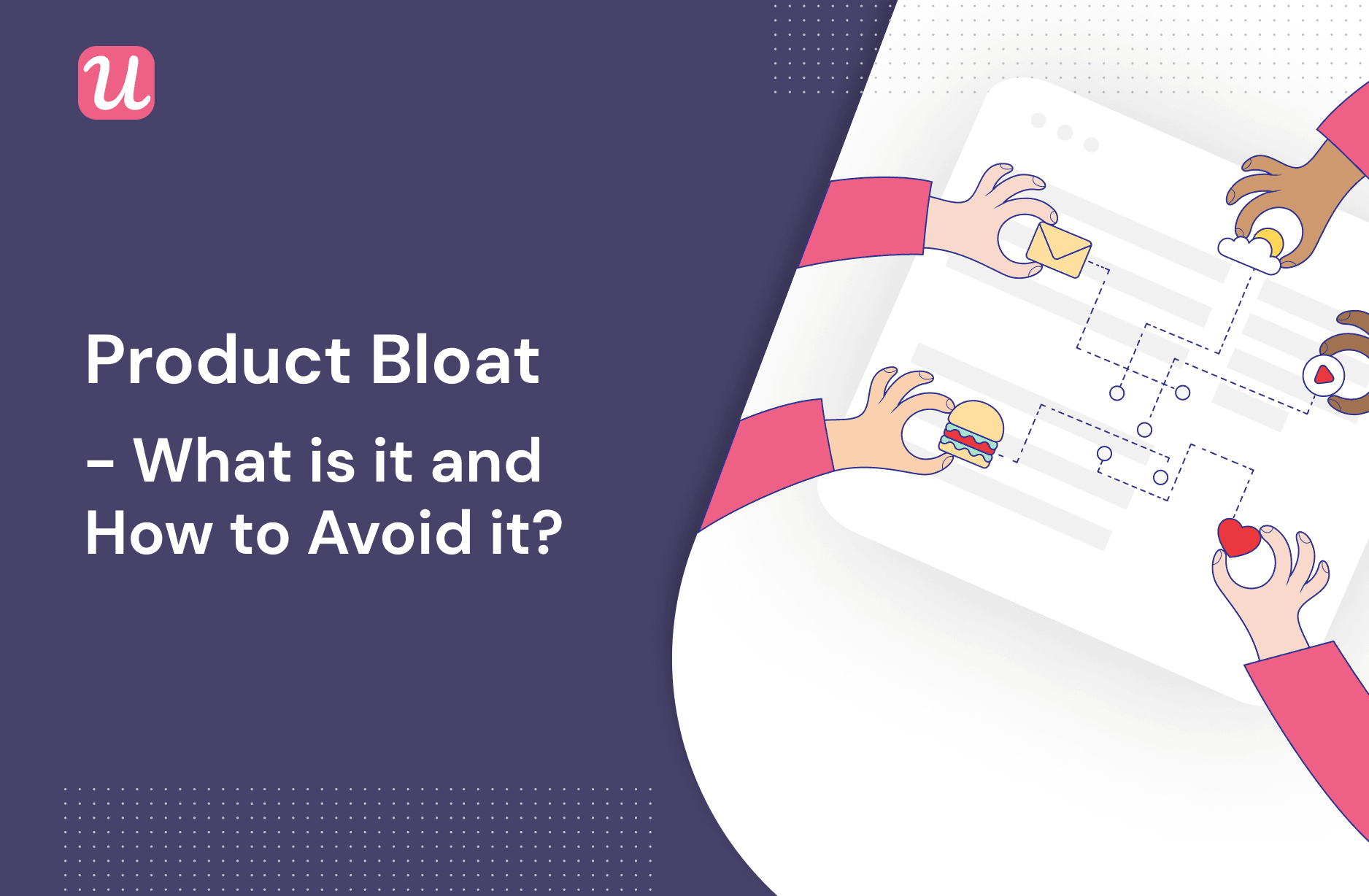
When building a product, it is sometimes difficult to draw the line between what features to build and which ones to let go of. If that line is not drawn early and often, you end up with the most horrifying term any product will ever encounter: feature bloat.
Also known as feature creep, feature fatigue, or feature overload – having too many features is something all teams must watch out for. It can lead to customer churn, overly complex products, and unforeseen technical debt.
If you’re wondering how to avoid the build trap and build features with purpose, we’ve put together some tips for you below.
Get The Insights!
The fastest way to learn about Product Growth, Management & Trends.
Summary of feature bloat
- Always ask ‘what’ and ‘why’ when looking to solve problems.
- Use a product problem template that can help your team identify opportunities.
- Avoid bias by focusing on feedback and not actioning requests.
- Prioritize your roadmap with objectives in mind.
- Prioritize usability above shiny objects.
The ‘what’ and ‘why’ of features
When considering what to focus on next, product managers should always ask two key questions:
- What problem are we trying to solve?
- Why are we trying to solve it?
This allows the team to focus on the product strategy, rather than the output and the solution. In other words, you are putting your focus on the purpose rather than the end result.
This then opens up the team to be able to run proper discovery, set a hypothesis, run experiments and understand whether or not it is actually worth it to move forward with the idea.
The product problem template
A good place to get started is to use a product problem template. This template can be used by anyone in your team when they’re proposing a new idea.
- What problem are you trying to solve?
- Hypothesis
- What value would this provide to the user?
- What value would it provide to our company?
Now let’s take a real-world example of an idea someone might send your way:
Let’s create an internal community for our customers.
Can you tell why this is a solution and not a problem statement?
The proposal above focuses on one thing alone: let’s do x. It does not explain why, it’s simply a raw statement to do something.
Instead, you can ask your team to fill out the template, and taking the example above, it might look something like this:
- What problem are you trying to solve?
We’d like to engage with customers better and have a closer relationship with them. - Hypothesis
If we find better ways to engage with our audience, we would be able to tap into their knowledge, ask more questions, run more experiments, and develop better relationships – this would help us reduce churn and adopt early users! - What value would this provide to the user?
Closer communication and transparency with our company. - What value would it provide to our company?
Ability to speak to more customers, run discovery, understand their problems.
Having a simple template like the one above will get your entire team to think about outcomes and problems to solve. It changes the conversation from ‘let’s do x’ to ‘how might we be able to solve this problem?’ establishing product-thinking throughout your entire organization.
It is only at this point in time that you can start focusing on ways to engage your audience, out of which a community might be one, and explore all possible options for a final solution.
Stop validating, start invalidating
When evaluating additional functionality, product managers will often look at what customers are saying.
However, I still see a lot of teams making two crucial mistakes:
- They try to gather “requirements” and “new feature requests”
- They try to validate what they already know
This is exactly what is still leading many product teams to fall into the same loop of unnecessary features!
Here is how to combat that:
Feedback vs requests
Product management is about taking in feedback, not about taking in requests (unless you’re working at an agency, of course.)
Change that conversation and drop the term ‘feature request.’
Instead, start calling these feature requests ‘customer feedback.’
This means that instead of building new features based on requests, you are carefully considering adding features based on customer feedback. This also allows you to ask questions, understand problems, and implement solutions that benefit your customers and product.
Remember – customers tend to ask you to add features based on their current experiences. They know they have a problem, but it is up to you to define what the best solution might be.
Don’t validate what you already know
If you analyze feedback and ask questions based on what you already know, you’re going to do a checkmate on yourself and learn absolutely nothing.
Instead, approach things differently and start asking questions that will help you invalidate what you know so far. This might actually help you avoid adding product features altogether. Bad features are often born from bias and a narrow view of what is happening.
Break that cycle with proper customer research that will help you understand how wrong you are about your current hypothesis.
Prioritize your roadmap
You can prioritize half of the things you think you need to build by starting with your decision-making process at the very top of the funnel with a clear roadmap.
Now there’s a lot that goes into building a roadmap, including cost of delay analysis, market research, and competitor analysis – but a simple and solid place to get started is by setting clear objectives.
By setting these objectives in place, you help your entire organization stay focused and you actually help avoid feature bloat early on in the process.
This means that if anything you are considering building does not currently fit those objectives, you can immediately discard it as an option.
Prioritize usability
When designing a new product, adding more features does not actually guarantee happy users.
Remove some of the complexity of the solution by prioritizing usability for the customer.
In other words – you can design the unicorn with all the bells and whistles and all the magic in the world, but it doesn’t mean you have to build it.
Build what is actually useful in its most viable and essential form, present it to the customer, and then re-assess the next iteration.
This is called the build, measure, learn loop.

- Build the minimum lovable version of your unicorn.
- Measure the success of what you’ve built.
- Learn from the experience.
Then you can build more on top of it if needed. In most cases, you will end up finding out half of the shiny objects you thought people wanted weren’t necessary in the first place.
Congratulations, your team has just avoided feature bloat!
To build product tours that are clear, snappy, and easy to follow, give Userpilot a try – get a free demo from the link below.







